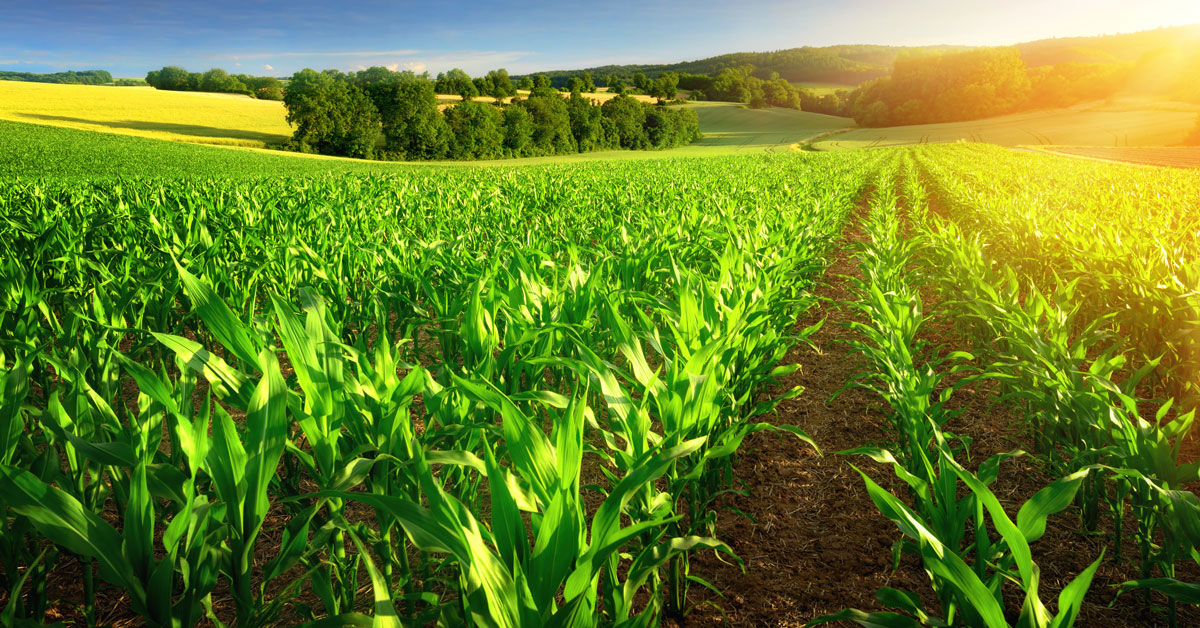
Net return for organic corn/soybean/wheat rotation significantly higher than conventional
A study at Purdue University has found that if organic farmers get 100 percent premiums and keep their yield drag to one-third of conventional, they tend to be more profitable than conventional growers – see the article below.
The researchers wrote up their results in a report which is available online. The crop rotations studied involved corn, soybeans and wheat. A high proportion of the corn and soybeans in the US are GMO, so the study is a sad comment on the lack of rewards for farmers of growing GMO crops. The study found that the scenario tested "produced net profits for the organic production of about $50 per acre but net losses of about $60-$70 per acre for the conventional systems".
While the study assumed a significant yield drag for organic, another study on actual field performance showed different results. The Rodale Institute’s Farming Systems Trial is the longest-running side-by-side comparison of organic and conventional grain cropping systems in North America. It has found that organic yields are competitive with conventional yields after a 5-year transition period and that organic yields can be up to 40% higher in times of drought, due to the healthier soils, which hold moisture better. The Rodale's "conventional" plots include GM crops, in order to better reflect real farming conditions in the US.
---
Profit study on organics yields data
By Ed White
The Western Producer, 2 July 2020
https://www.producer.com/2020/07/profit-study-on-organics-yields-data/
Can be read in the EU via the web archive:
https://web.archive.org/web/20200703162921/https://www.producer.com/2020/07/profit-study-on-organics-yields-data/
If organic farmers get 100 percent premiums and keep their yield drag to one-third of conventional, they tend to be more profitable than conventional growers.
That’s the conclusion of a Purdue University study analyzing the profitability of typical rotations in the United States Midwest over a 10-year period.
“The net return to land for the organic rotation was $268 per acre, or approximately $110 and $120 higher than that of the conventional corn/soybean and conventional corn/soybean/wheat rotations (in the scenario studied),” concludes the June 5 report by Michael Langemeier and Xiaoyi Fang.
The study compares the two styles of farming, with organic using more manure, labour and machinery, and conventional using more fertilizer, herbicides and insecticides.
The prices were taken from the FINBIN database at the University of Minnesota’s Centre for Farm Financial Management.
“An analysis of this sort requires a lot of assumptions,” says the report, entitled Comparison of Conventional and Organic Crop Rotations.
However, none of the assumptions appears to be a radical departure from common observations about the crop production results for competent, experienced organic growers and for organic markets.
The researchers assume organic corn yields 32 percent less than conventional, 33 percent less for soybeans and 24 percent less for wheat.
With conventional corn priced at $3.60 per bushel and organic at $8.30, conventional soybeans at $8.85 and organic at $18.60 and wheat at $4.85 versus $9.70, the scenario produced net profits for the organic production of about $50 per acre but net losses of about $60-$70 per acre for the conventional systems.
To bring the organic system down to the level of profitability of the conventional system, yields would have to decline about another 18-20 percent from the usual organic yield drag.
The study was undertaken because of the growing market demand for organic crops and a lack of information about relative profitability for farmers.
“Information pertaining to the relative profitability of conventional and organic production is often lacking,” note the authors.
While the results might suggest that converting to organic production makes sense for grain farmers seeking enhanced profitability, the authors also issue a caution.
The costs, yields and prices received can vary significantly, which can badly skew the profitability, they note. This might be why there is a big spread between organic producers on profitability.
The FINBIN data “shows a much wider difference in enterprise net returns among organic crop farms than their conventional counterparts.”










